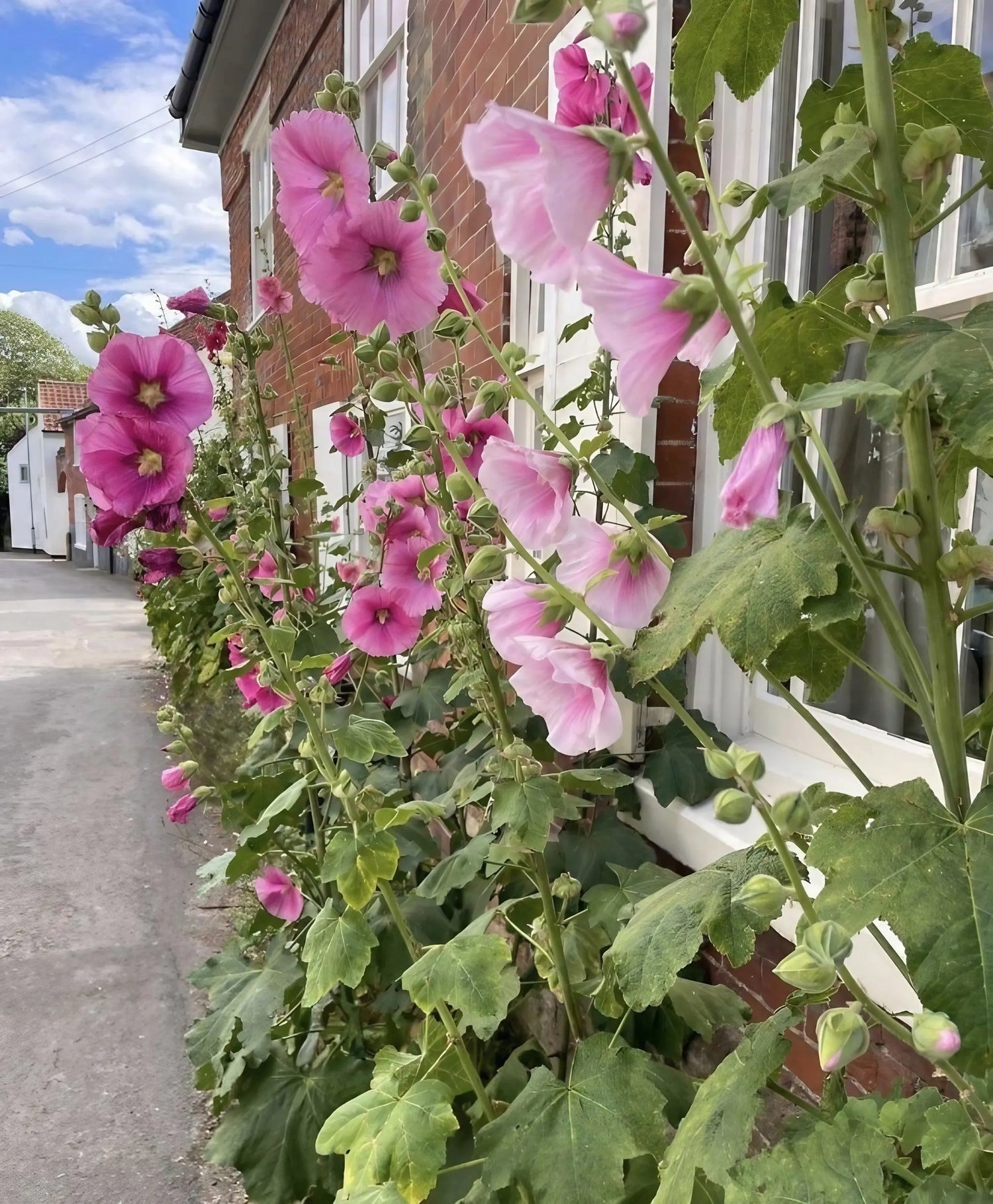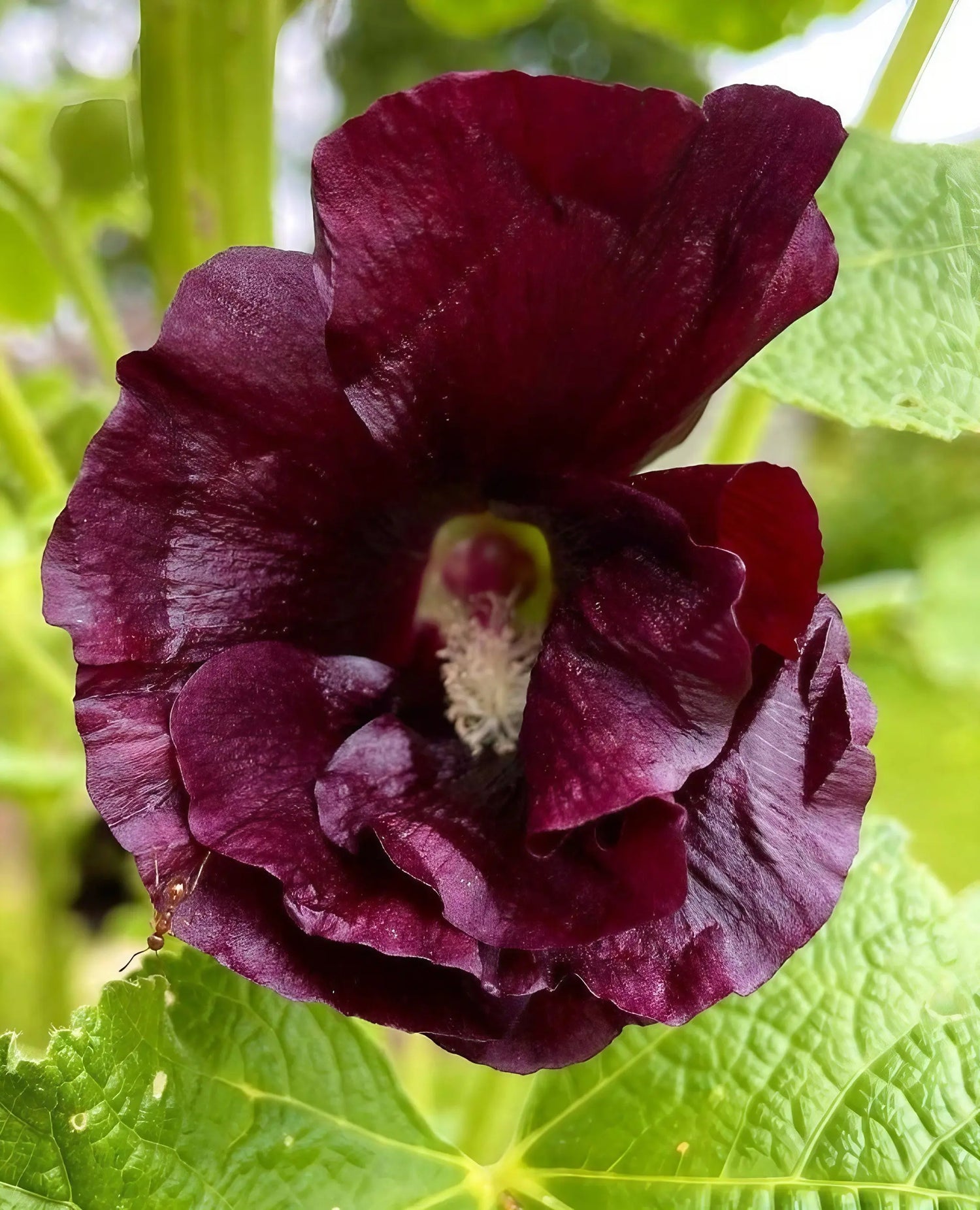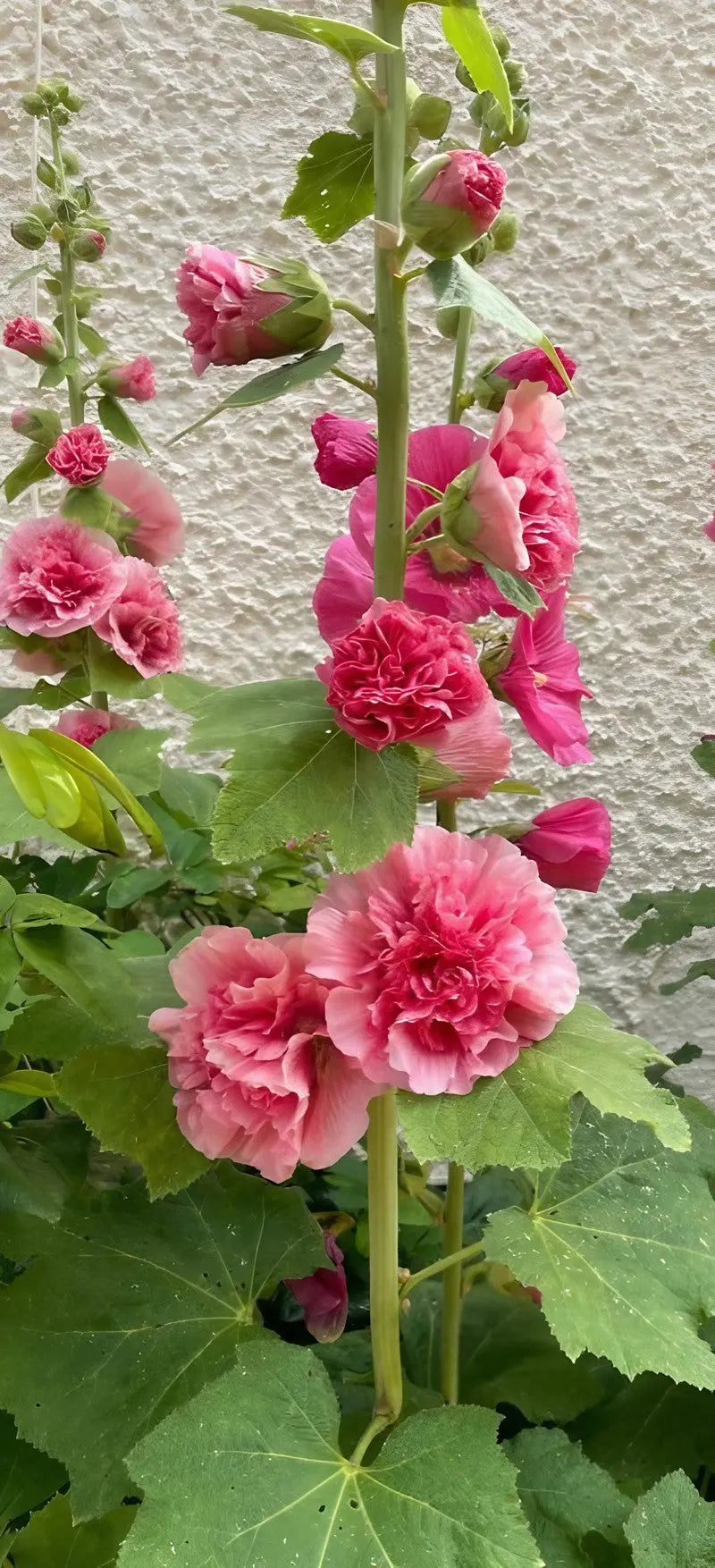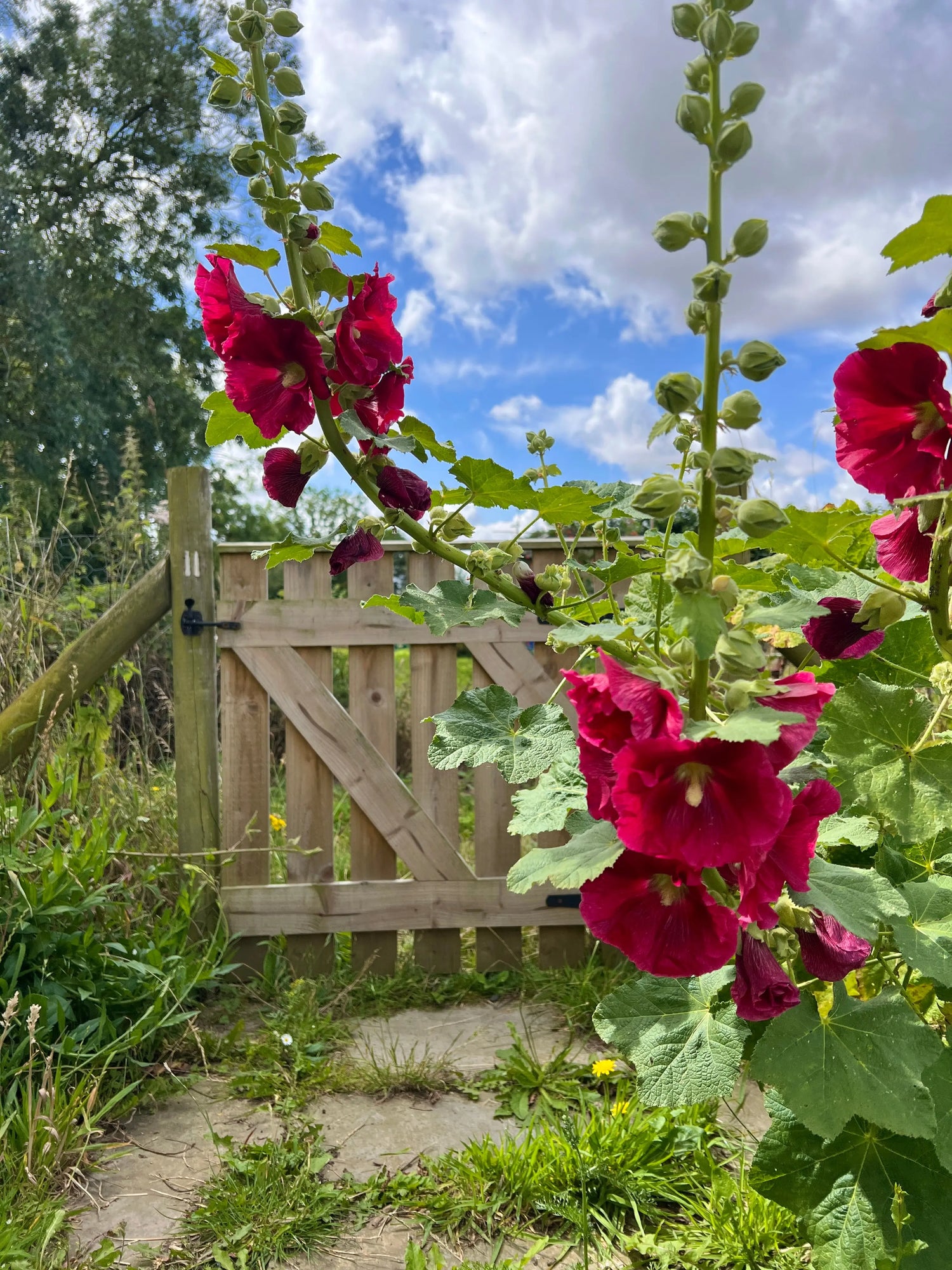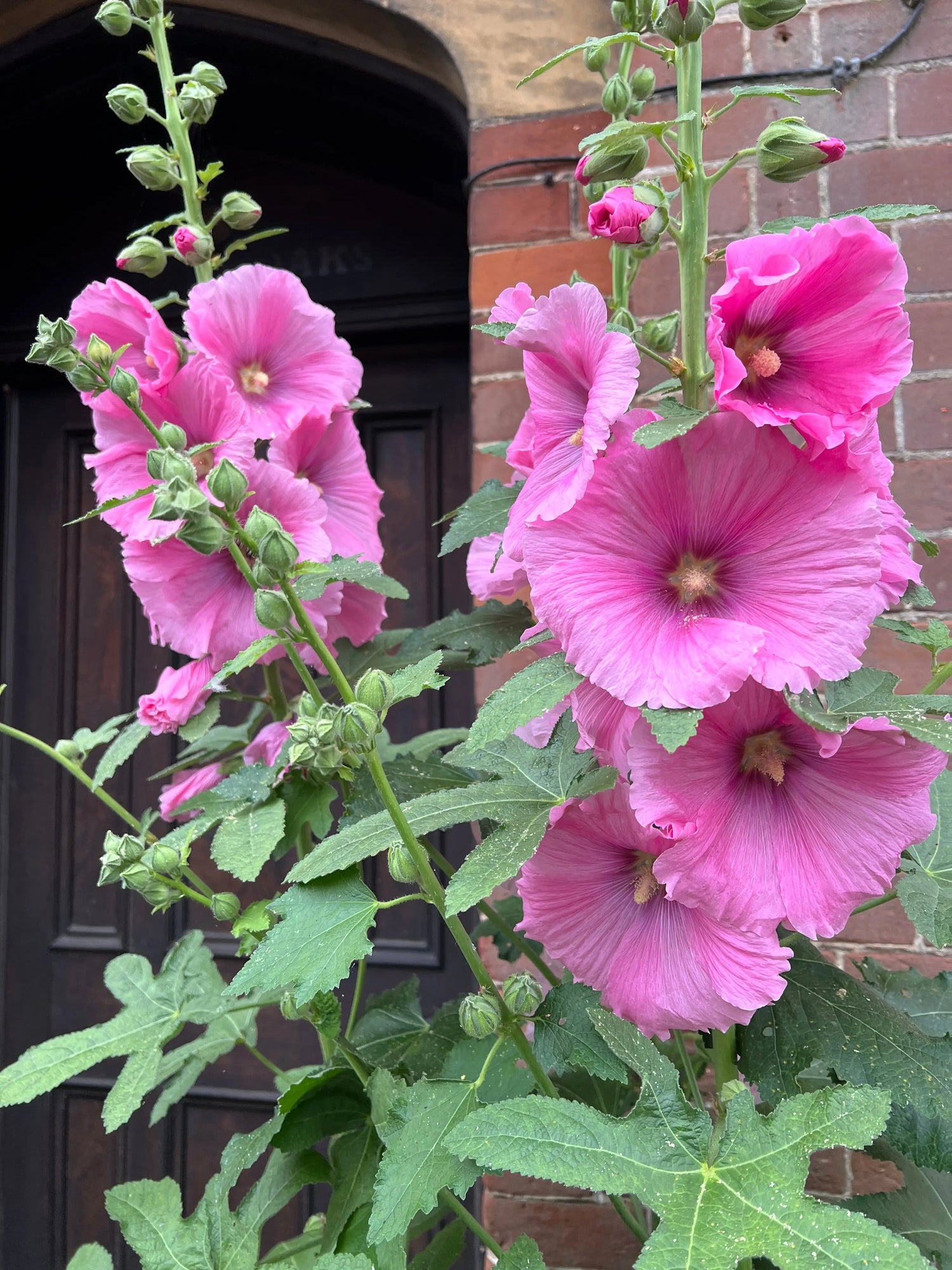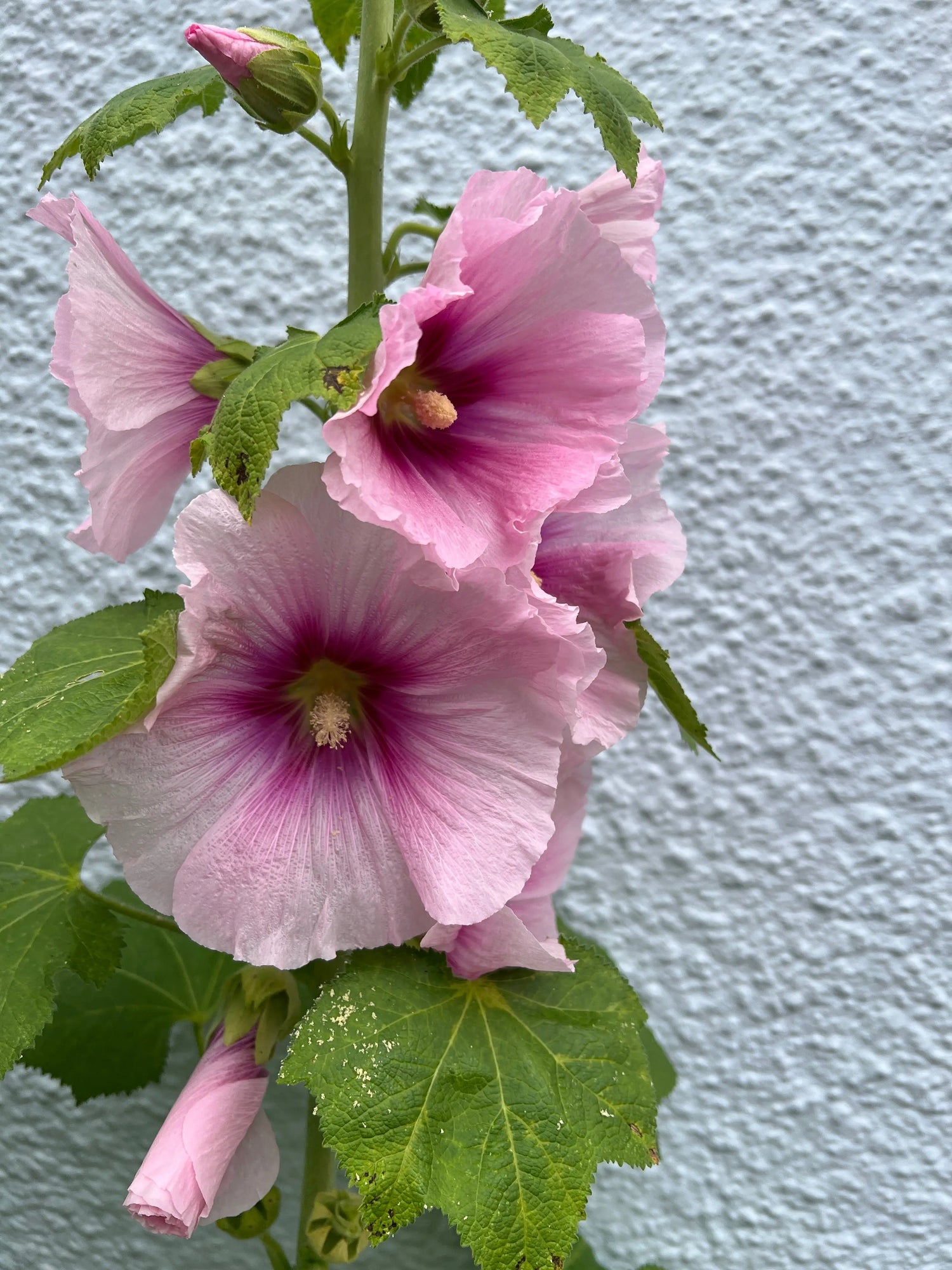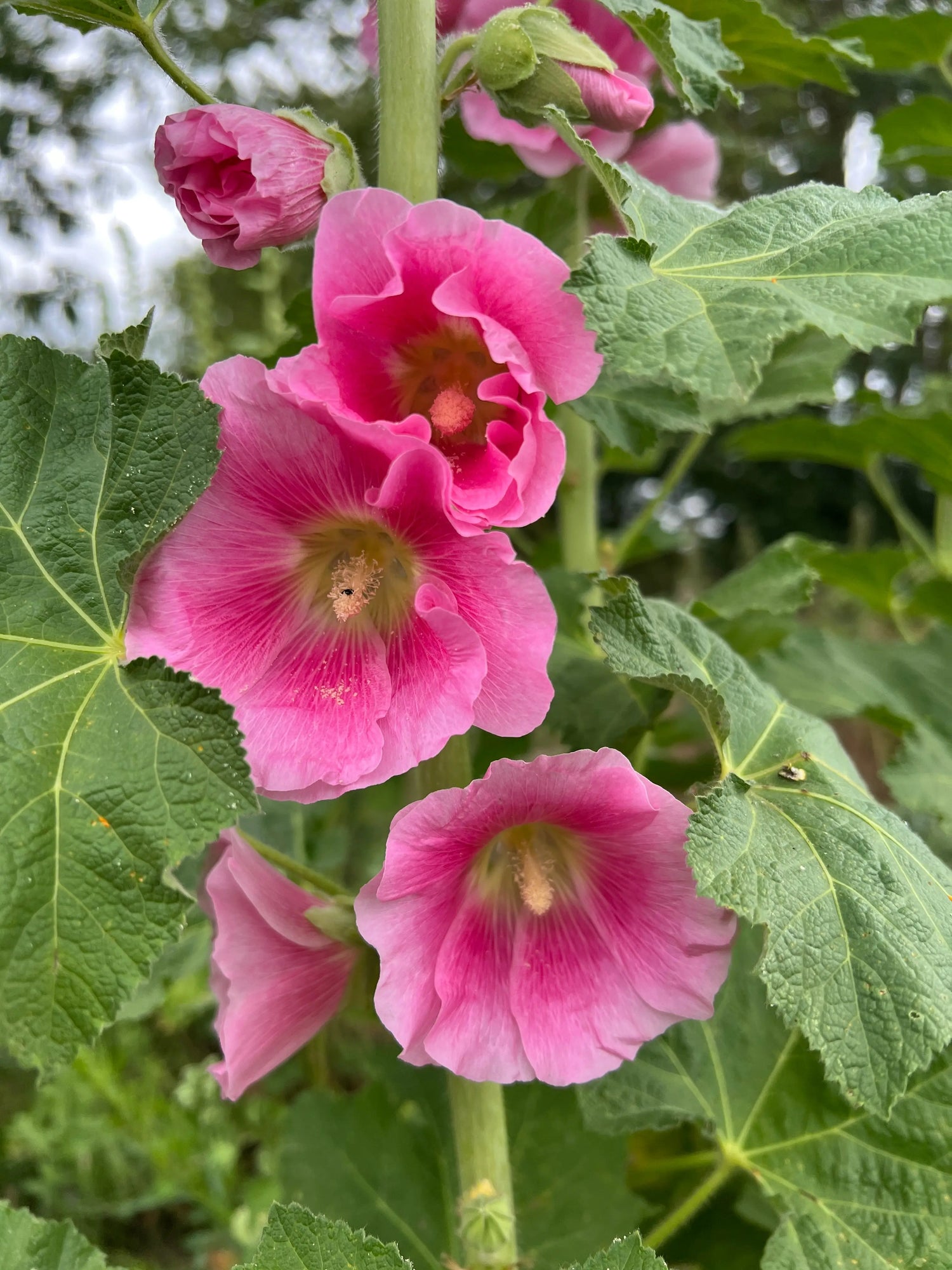Hollyhock 'Bishy Barnabee Mix' Seeds
You simply cannot have a traditional English garden without Hollyhocks standing guard at the back of the border. Our exclusive 'Bishy Barnabee Mix' is a hand-picked selection of our favourite varieties. Expect towering spikes adorned with large, saucer-shaped blooms in a riot of shades: from deep maroon and lipstick pink to soft lemon, apricot, and pure white.
These are the giants of the flower bed. Reaching heights of up to 8 feet, they draw the eye upward, adding essential vertical structure. They look their absolute best when planted against a warm brick wall, a weathered fence, or the side of a cottage, where they can lean bask in the sun.
Why Your Garden Needs 'Bishy Barnabee Mix'
We love these plants for their nostalgia. They remind everyone of their grandmother's garden. They bring a sense of history and permanence that modern bedding plants just can't match. Watching bumblebees tumble out of the wide, open flowers covered in pollen is one of the highlights of high summer.
This mix is also fantastic for structure. If you have a "flat" garden, a row of Hollyhocks instantly breaks up the horizon line, making the space feel more dynamic and enclosed.
Understanding the Plant: What is a Biennial?
Hollyhocks are classic Biennials.
This means they operate on a two-year cycle.
Year 1: Sow the seeds. The plant grows a large rosette of rough, heart-shaped leaves but usually does not flower.
Year 2: The plant sends up its massive flower spike, blooms spectacularly, sets seed, and then dies.
Top Tip: Establish a "production line." If you sow seeds every single year, you will eventually have plants in Year 1 mode and Year 2 mode simultaneously, guaranteeing flowers every summer.
Growing Guide: How to Sow and Grow
Hollyhocks are robust and easy to germinate, but they hate being moved once they get big.
🌱 Germination:
Sow indoors April-May, or outdoors June-July. Sow seeds singly in deep pots (to accommodate the taproot) or directly into a seedbed. Cover lightly with soil (approx 5mm). Germination usually takes 10-14 days.
Where to Sow:
They need full sun and shelter from strong winds (or they will snap). They thrive in rich, well-drained soil. Avoid planting them in an overly crowded spot—they need good air circulation around the leaves to prevent rust.
Care While Growing:
Rust Watch: Hollyhocks are prone to "Rust" (orange spots on the lower leaves). This is unsightly but rarely kills the plant. To manage it, simply snip off the bottom leaves as soon as you see spots appearing, and keep the base of the plant clear of weeds.
Plant Specifications
Here is a quick reference guide to the key features.
| Latin Name | Alcea rosea |
| Common Name | Hollyhock |
| Hardiness | H5 (Hardy - withstands cold winters) |
| Light Required | Full Sun ☀️ |
| Height | ↕️ 1.8m - 2.4m (6ft - 8ft) |
| Spread | ↔️ 60cm |
| Spacing | 🌱 60cm apart |
| Great for | 🧱 Back of Border 🏡 Cottage Gardens 🐝 Bumblebees 🏰 Wall-side planting |
| Seed Count | Approx. 50 seeds per packet |
My Recommended Garden Companions
Hollyhocks often get "scruffy ankles" (the bottom leaves can fade). The secret is to plant bushy things in front of them to hide their legs:
- ☁️ Cosmos 'Purity': Cosmos grows to about waist height, which is perfect for masking the base of the Hollyhocks. The ferny foliage provides a soft green skirt, while the white flowers contrast beautifully with the colourful Hollyhock spikes.
- 🌸 Foxglove 'Excelsior Mix': Plan for succession! Foxgloves bloom in early summer. As they finish, the Hollyhocks (planted just behind them) will take over, keeping the "vertical spike" theme going right through to autumn.
📅 Sowing & Flowering Calendar
Sow in summer for flowers the following year.
(↔️ Swipe chart to see all months)
| Month | J | F | M | A | M | J | J | A | S | O | N | D |
|---|---|---|---|---|---|---|---|---|---|---|---|---|
| Sow Seeds | 🟢 | 🟢 | 🟢 | 🟢 | ||||||||
| Flowers (Yr 2) | 🌸 | 🌸 | 🌸 |
⚠️ Skin Irritation Note
While Hollyhock flowers are actually edible (often crystallized for decoration), the hairy leaves and stems can cause skin irritation and itching in some people. We recommend wearing long sleeves or gloves when pruning large plants.
🏆 Officially Recognised Excellence
Hollyhocks are an essential part of the ecosystem. Alcea rosea is listed on the RHS Plants for Pollinators list, serving as a major pollen source for bumblebees during high summer.
- Regular price
-
£2.10 - Regular price
-
- Sale price
-
£2.10
-
Hurry, only 10 items left in stock!
5.0 / 5.0
(1) 1 total reviews
Couldn't load pickup availability
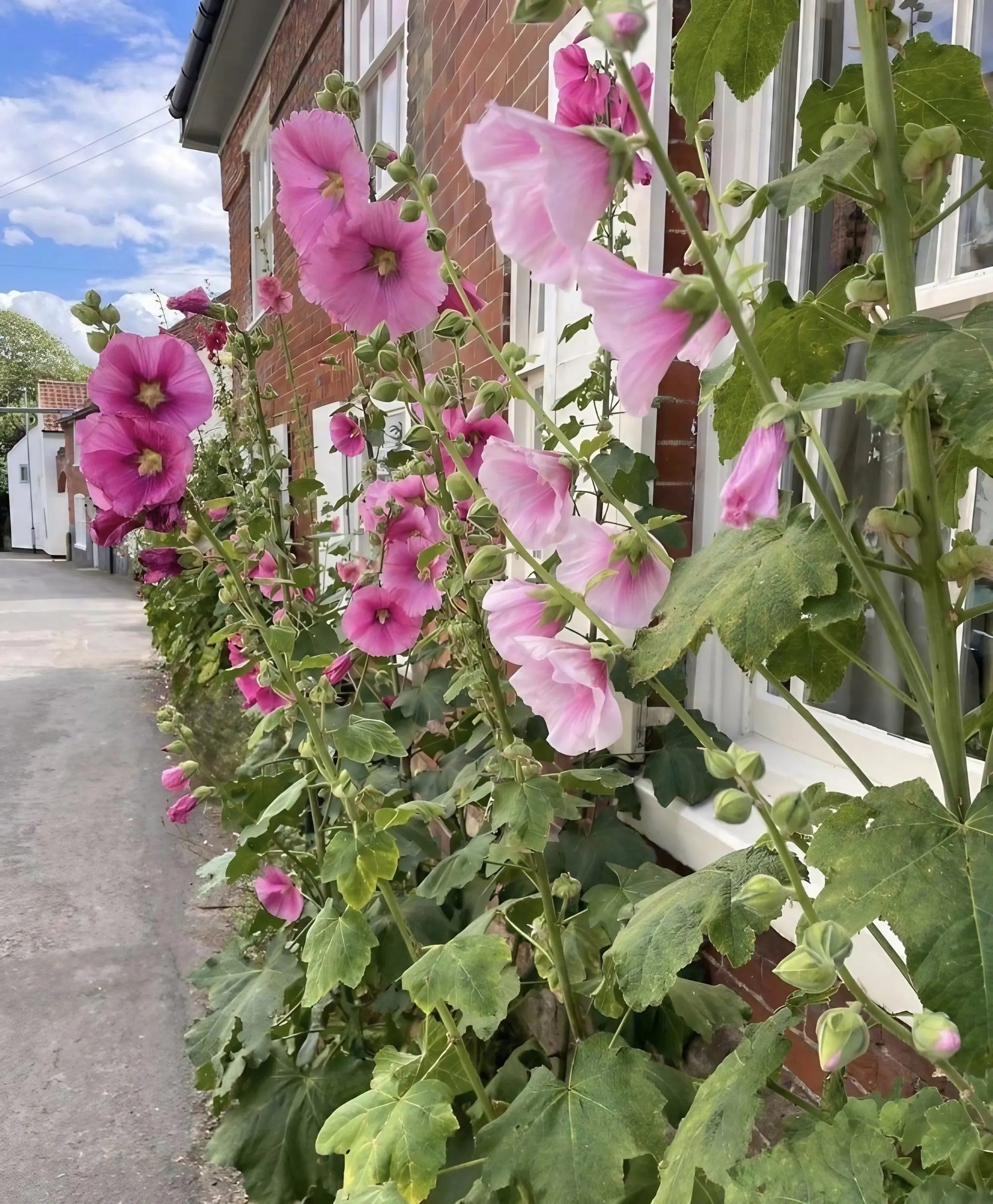




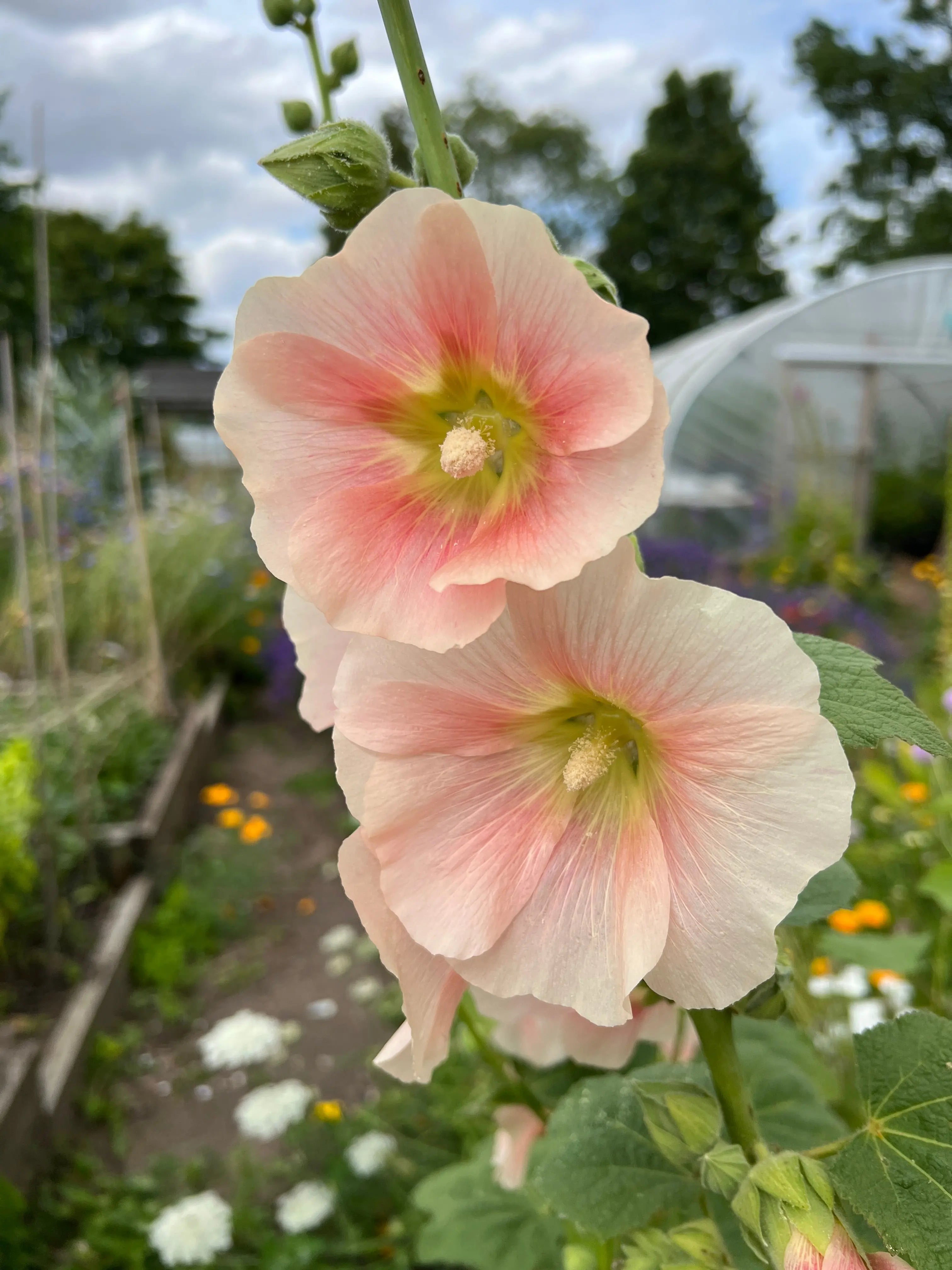



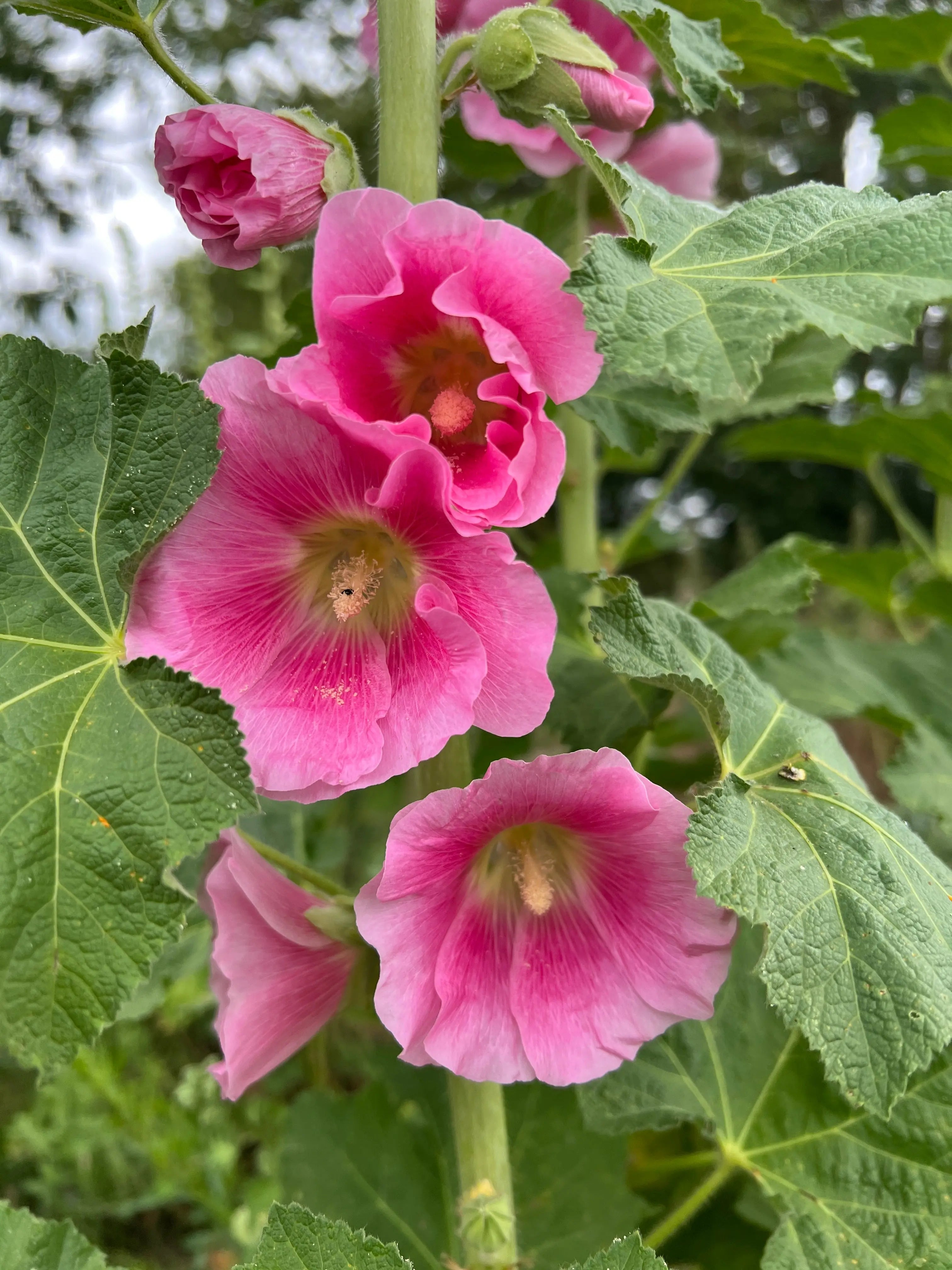

Hollyhock Bishy Barnabee Mix
- Regular price
-
£2.10 - Regular price
-
- Sale price
-
£2.10


